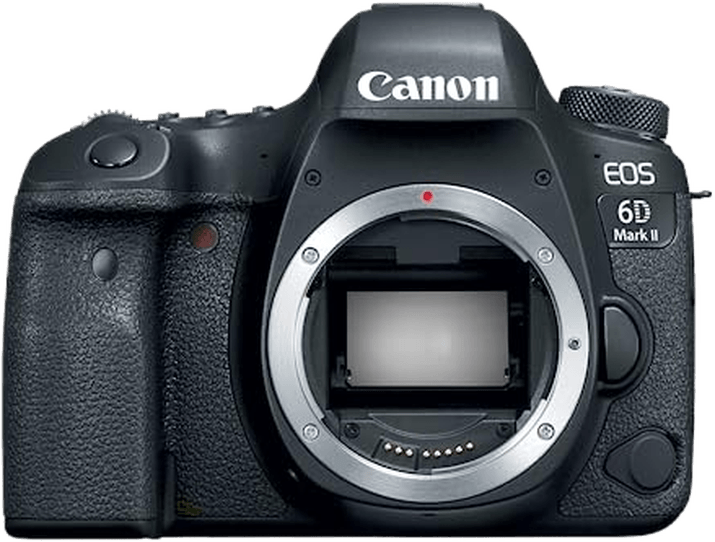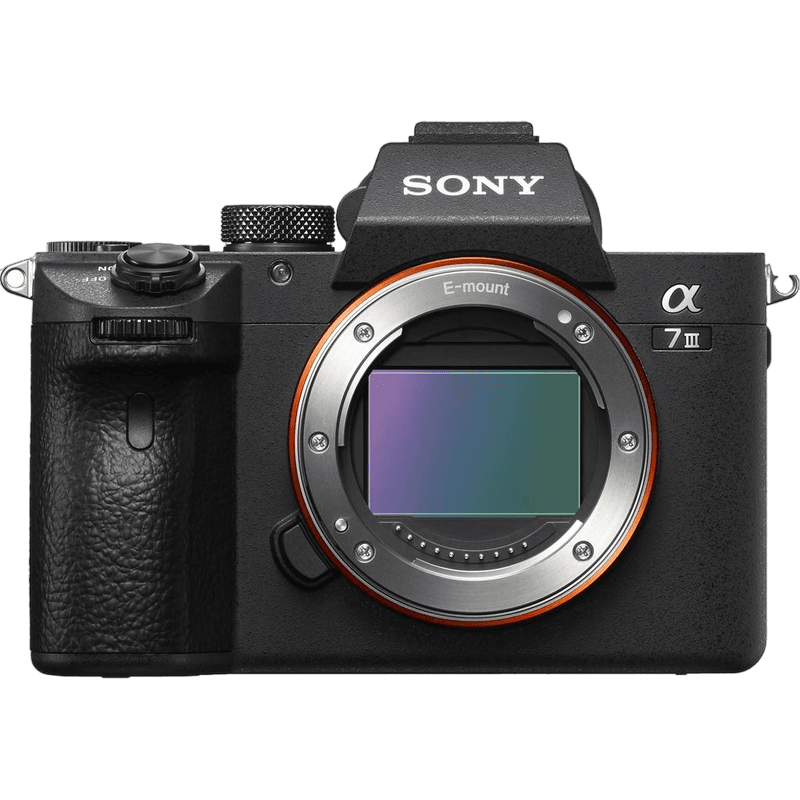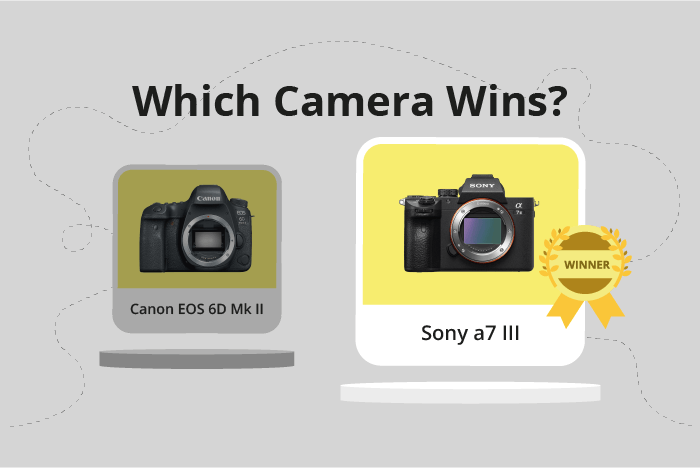Canon EOS 6D Mark II vs Sony a7 III Comparison
Canon EOS 6D Mark II

Sony a7 III

The Sony a7 III outperforms the Canon EOS 6D Mark II with a score of 81 compared to 71. Both cameras were released in 2017 and 2018, respectively, and share the same launch price of $2000. They also have similar camera sizes, with the Canon being slightly larger and lighter at 144 x 111 x 75mm and 453g, while the Sony measures 127 x 96 x 74mm and weighs 650g.
The Sony a7 III’s higher score highlights its superior performance as a mirrorless camera. Its compact size and additional features make it a better choice for most users. However, the Canon EOS 6D Mark II is not without its merits as a DSLR, offering a lighter weight which could be beneficial in certain situations.
Taking these factors into account, the Sony a7 III is the clear winner in this comparison due to its overall performance and features. However, the Canon EOS 6D Mark II remains a viable option for those who prefer a lighter DSLR camera.
Canon EOS 6D Mark II vs Sony a7 III Overview and Optics
The Sony a7 III outperforms the Canon EOS 6D Mark II in optics with a score of 81/100 compared to the Canon’s 69/100. Both cameras share some common specifications, including a CMOS sensor, full-frame sensor size, and a lens mount specific to their respective brands (Canon EF and Sony FE).
The Sony a7 III excels with its higher shooting speed of 10 frames per second (fps) compared to the Canon’s 6.5 fps. This faster shooting speed allows the Sony a7 III to capture better action shots and fast-moving subjects. Additionally, the Sony a7 III has a higher DXOMARK score for its sensor at 96, compared to the Canon’s 85. This means the Sony a7 III delivers better image quality and low-light performance. Furthermore, the Sony a7 III features image stabilization, which helps reduce the impact of camera shake, resulting in sharper images.
On the other hand, the Canon EOS 6D Mark II offers a slightly higher megapixel count at 26.2 compared to the Sony’s 24.2. This difference in megapixels provides the Canon with a marginal advantage in capturing more detail and higher resolution images. However, this advantage is not significant enough to outweigh the benefits offered by the Sony a7 III in other optical aspects.
In comparing the optics of these two cameras, it is evident that the Sony a7 III is the superior choice due to its faster shooting speed, higher DXOMARK sensor score, and the added benefit of image stabilization. While the Canon EOS 6D Mark II has a slight edge in megapixels, the overall optical performance of the Sony a7 III makes it the better camera for most photographers.
Canon EOS 6D Mark II vs Sony a7 III Video Performance
The Sony a7 III edges out the Canon EOS 6D Mark II in video capabilities with a higher score. Both cameras share some common video specifications, such as a maximum video frame rate of 30fps. However, there are notable differences in their video capabilities that contribute to the a7 III’s slight advantage.
Both models have a built-in time-lapse functionality, which is a useful feature for capturing stunning time-lapse videos without the need for additional equipment or software. This feature can be particularly beneficial for photographers who enjoy capturing the passage of time in their videos, such as the movement of clouds or the setting sun.
The Sony a7 III excels in terms of video resolution, offering 4K video recording with maximum dimensions of 3840 x 2160. This is a significant advantage over the Canon EOS 6D Mark II, which only offers Full HD video recording with maximum dimensions of 1920 x 1080. The higher resolution provided by the Sony a7 III allows for more detailed and visually impressive videos.
Canon EOS 6D Mark II vs Sony a7 III Features and Benefits
The Canon EOS 6D Mark II wins the features comparison with a score of 83/100, while the Sony a7 III follows closely with 81/100. Both cameras share several common specifications: 3-inch screen size, touchscreen capability, flip screen, Wi-Fi, and Bluetooth connectivity.
The Canon EOS 6D Mark II outperforms the Sony a7 III in screen resolution and GPS functionality. It boasts a screen resolution of 1,040,000 dots, providing a sharper and more detailed display compared to the Sony a7 III’s 921,600 dots. Additionally, the Canon EOS 6D Mark II has GPS, allowing for geotagging of photos and easy tracking of shooting locations. This feature is absent in the Sony a7 III, which may disappoint users who prioritize location-based data.
On the other hand, the Sony a7 III’s lower feature score does not necessarily indicate inferiority. Both cameras excel in their respective areas, and the choice between them ultimately depends on the user’s preferences and priorities. While the Canon EOS 6D Mark II has a slight advantage in screen resolution and GPS, these may not be critical factors for some photographers.
Considering the close scores and shared features, both the Canon EOS 6D Mark II and the Sony a7 III are excellent choices for photographers seeking a high-quality camera with an array of useful features. The decision between the two should be based on individual needs and preferences, with the Canon offering higher screen resolution and GPS, while the Sony a7 III remains a strong contender despite its slightly lower feature score.
Canon EOS 6D Mark II vs Sony a7 III Storage and Battery
The Sony a7 III outperforms the Canon EOS 6D Mark II in storage and battery with a score of 81, compared to the Canon’s 45/100. Both cameras accept SD, SDHC, and SDXC memory cards, but the Sony a7 III offers an additional memory card slot and compatibility with Memory Stick Duo, Pro Duo, and Pro-HG Duo cards. This gives the Sony a7 III an advantage in storage flexibility and capacity. It also offers USB charging.
In terms of battery life, the Canon EOS 6D Mark II surpasses the Sony a7 III with 1200 shots per charge, while the Sony a7 III provides 750 shots. The Canon uses the LP-E6N battery type, while the Sony utilizes the NP-FZ100.
Despite the lower score, the Canon EOS 6D Mark II excels in battery life, offering photographers extended shooting time. However, the Sony a7 III’s superior storage options and additional memory card slot make it the overall winner in this category.
Canon EOS 6D Mark II vs Sony a7 III – Our Verdict
Are you still undecided about which camera is right for you? Have a look at these popular comparisons that feature the Canon EOS 6D Mark II or the Sony a7 III:

